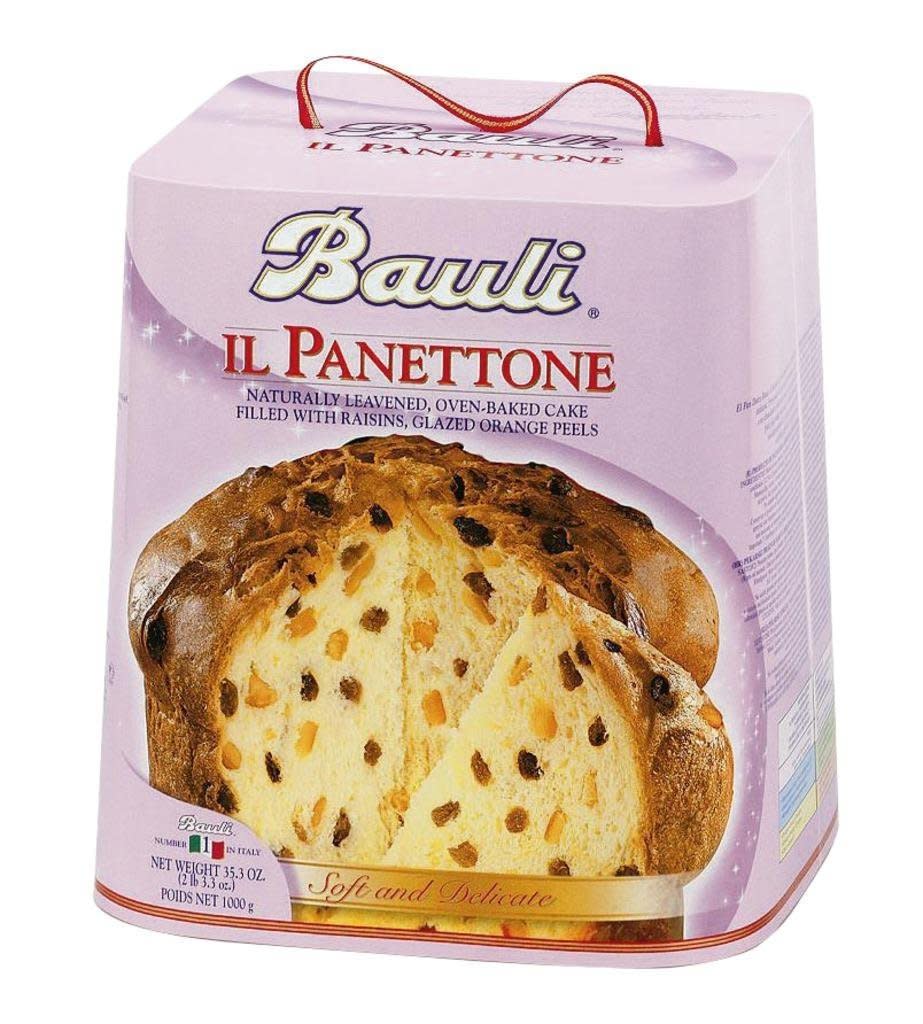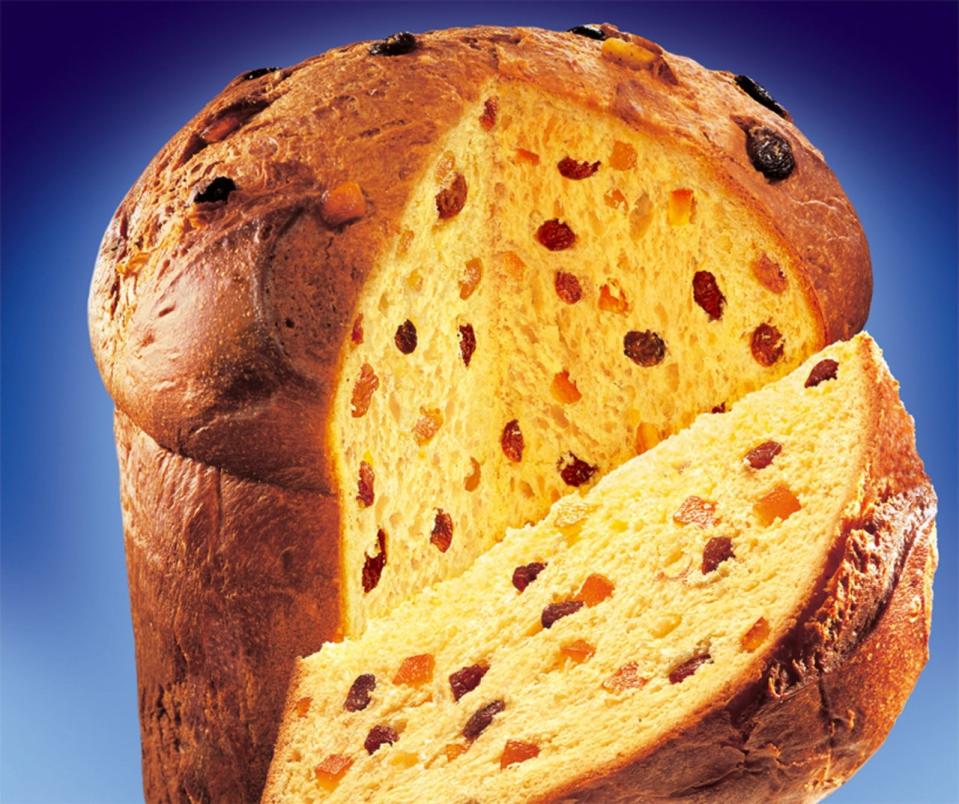The History of How Panettone, Italy’s Favorite Christmas Dessert, Infiltrated the U.S.

By mid-December, American supermarkets the nation over are bedecked with tinsel-studded holiday displays. Platters of festive Christmas cookies keep company with refrigerated shelves of eggnog, while stacks of fruitcake, candy canes, and gingerbread dot grocery aisles. And then, of course, there are the towering pyramids of boxed panettone.
The classic Christmas and New Year’s bread — pronounced “pah-nah-toe-nay” — hails from Milan, Italy, and is recognizable by its tall mushroom shape and yeasted, dried fruit-flecked dough. Light and airy, panettone’s texture is a result of being allowed to rise two to three times. It’s become increasingly popular over the last decade, yet its backstory remains largely unknown stateside. And it’s more interesting than you might think.
Related: Inside the Mind of a Master Cookie Artist
Panettone’s origins may possibly stretch all the way back to ancient Mesopotamia. “There are actually records of Babylonians making yeasted fruit breads,” said food historian Michael Krondl, who writes about panettone in his paean to sugar, Sweet Invention: A History of Dessert. “They were the great-great-great-great-ancestors of something like panettone,” he said, adding that there’s evidence of other panettone precedents dating to the Renaissance.
However, the exact beginnings of the yeasted bread known as panettone are up for debate. Legends abound, most notably one about a Milanese nobleman who invented the delicacy in the 1400s to woo the daughter of a poor baker named Toni. He named his creation — a rich bread of flour, butter, eggs, dried raisins, and candied citrus peels — pan del Ton, or Toni’s bread.
Related: The Intriguing Backstory of This Crazy High Apple Pie
Whatever its origins, panettone became associated with Christmas because of its luxury status. It rose to prominence in Milan sometime during the late-18th to early-19th centuries, when, in keeping with Milan’s reputation as a moneyed enclave of opulent furniture and clothing outfits, fancy pastry shops catered to the city’s affluent with high-end panettone. Even today, “you can spend anywhere up to €50″ — about $54 — “for one of those things [in an upscale bakery],” Krondl explained.
Around the same time, other Italian cities became known for similar sweet breads, notably pandoro in Verona (a star-shaped bundt cake with less fruit than panettone) and focaccia in Venice (a squat, loaf-like bread not to be confused with the savory variety laden with olive oil and salt). But only panettone was fated for global fame.
Related: Solutions to Every Christmas Problem You May Encounter
In the 20th century, companies like Bauli, Motta, and Alemagna began mass-producing and distributing panettone around Italy. Very quickly, it transformed the holiday treat into an affordable luxury. “Because it was so available, it became kind of the national Christmas bread,” Krondl said. Motta and Alemagna are today owned by Bauli, which in recent years has eyed markets outside Italy. “They started exporting it, and then everyone starting associating it with Christmas.”

Motta’s panettone. (Photo: Carlo Facchini)
These days, boxed panettone can be snagged for less than $15. The market has reacted enthusiastically, to say the least. Krondl shares in Sweet Invention that during 2007′s Christmas season alone, Italian bakers produced 117 million panettone and pandoro cakes, raking in a staggering $630 million. “As a result, most pastry shops don’t even bother to compete,” he writes.
Related: 13 New Christmas Cookie Recipes You Should Make this Year
That isn’t to say artisanal panettone is gone for good. In New York City, Brooklyn Bread Lab’s executive chef Adam Leonti recently unveiled his signature take on the Italian classic, which borrows from both Milanese and Venetian varieties. Made with flour milled in-house from Warthog wheat berries, the dough rises twice, including a half-day stretch hanging upside down to achieve optimal fluffiness. Leonti tosses in almonds and dark chocolate, then for good measure drizzles the whole thing with a sugary glaze.
“I had [panettone] growing up and memories of my family’s from Italy,” Leonti told Yahoo Food. “I had the America version, and never really understood it all that much. I didn’t hate it — some people really get offended by it — but I just never got it.” Convinced the shrink-wrapped supermarket iterations had nothing on the buttery, rich versions produced in Italian pastry shops, Leonti ached to find an equivalent in the States. Coming up empty, he resolved to develop his own recipe, a process that took three to four years.
“Having the real thing? I got why it was so special and so good,” Leonti said.
Curious about other Christmas delicacies? Look no further:
8 Modern Takes on the Bûche de Noël

